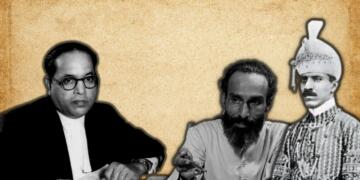The Aam Aadmi Party’s (AAP) victory in the Ludhiana West bypoll is more than just a routine electoral win, it may have opened a new chapter for party chief Arvind Kejriwal. With party MP Sanjeev Arora elected as an MLA from Ludhiana, his resignation from the Rajya Sabha could pave the way for Kejriwal to enter the Upper House.
For a leader who recently faced a dramatic downfall in Delhi, this opportunity could mark a political comeback. Given that Punjab remains the only state where AAP enjoys power, a Rajya Sabha seat from the state appears to be Kejriwal’s best chance to retain relevance at the national level.
Kejriwal’s Delhi Debacle: From Dominance to Defeat
Once a dominant force in Delhi politics, Arvind Kejriwal’s AAP suffered a massive blow in the 2025 Assembly elections. From winning 67 out of 70 seats in 2015 and 62 in 2020, the party was reduced to a mere 22 seats in 2025. Not only did Kejriwal lose his own New Delhi seat, but several senior AAP leaders also fell to BJP candidates. This landslide defeat raised concerns about AAP’s governance model, anti-corruption narrative, and even Kejriwal’s popularity. The BJP, leveraging a nationalistic and welfare-centric campaign, reclaimed Delhi with an overwhelming mandate. This loss left AAP politically cornered in the national capital and intensified its focus on Punjab the only remaining state under its rule.
Why Rajya Sabha from Punjab Makes Political Sense
With AAP’s majority intact in the Punjab Legislative Assembly, the state presents the only viable route for Kejriwal to enter the Rajya Sabha. The party holds 94 out of 117 seats, making any Upper House election in the state a mere formality. Sanjeev Arora, who recently won the Ludhiana West seat, is expected to resign from his Rajya Sabha position within 10 days, triggering a bypoll. The term for the vacated seat runs until 2028, giving Kejriwal ample time to re-establish a national political narrative from Parliament’s Upper House. While AAP has three Rajya Sabha MPs from Delhi and seven from Punjab, Delhi is no longer an option post-2025, making Punjab the logical launchpad for his resurgence.
Future Still Uncertain for AAP Despite By-poll Wins
Despite winning Ludhiana West and a few other by-polls, the larger political trajectory for AAP is riddled with challenges. In the 2024 Lok Sabha elections, AAP failed to secure a single seat outside of Punjab. Its alliance with the INDIA bloc faltered, and in states like Gujarat and Himachal Pradesh, it saw minimal traction. Even in Punjab, the party lost the Barnala seat, which it had previously won twice. While Ludhiana West and recent victories in Chabbewal, Gidderbaha, and Dera Baba Nanak offer momentary relief, they do not assure long-term sustainability. Voter sentiment remains volatile, and unless AAP revamps its national strategy and expands its grassroots network, the party risks being confined to a regional player.
A Calculated Shift to Punjab: Strategic or Desperate?
Kejriwal’s increased presence in Punjab over the past few months is not accidental. Since the Delhi defeat, he has strategically shifted the party’s focus to the only state it governs. The Ludhiana West bypoll was not just about securing a legislative seat it was a test of AAP’s enduring appeal in Punjab. A Rajya Sabha position for Kejriwal from Punjab would not only bolster his authority within AAP but also allow him to reframe his image in the national front rather than a regional administrator.
Fragmented Opposition in Punjab Boosts AAP’s Electoral Edge
The sharp decline of the Shiromani Akali Dal (SAD), once a dominant force in Punjab politics, has created a vacuum that the Aam Aadmi Party (AAP) is swiftly filling. Meanwhile, the opposition remains divided the BJP and Congress, ideological rivals at the national level, are unlikely to form a united front in the state. This fragmentation prevents vote consolidation against AAP, giving it an upper hand in closely contested constituencies.
Rajya Sabha: A Lifeline for Kejriwal?
The Ludhiana West win might just have handed Kejriwal a political lifeline. After a crushing defeat in Delhi, his entry into the Rajya Sabha from Punjab would help maintain relevance in national discourse. However, symbolism won’t be enough. To remain a key player in Indian politics, Kejriwal and AAP will need to reinvent themselves, build coalitions, and reconnect with a voter base that appears to be drifting. Whether the Upper House can become a platform for revival or merely a placeholder for relevance will depend on how well Kejriwal capitalizes on this opportunity.































